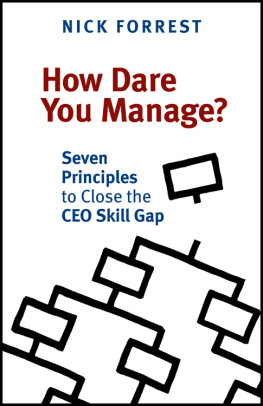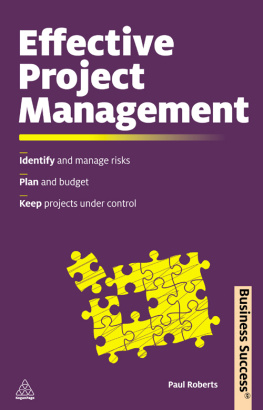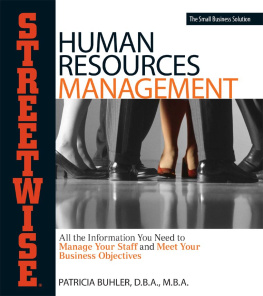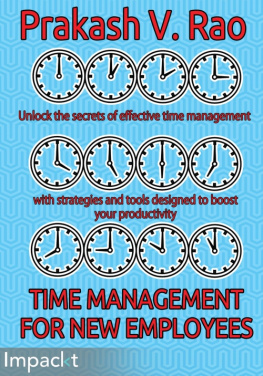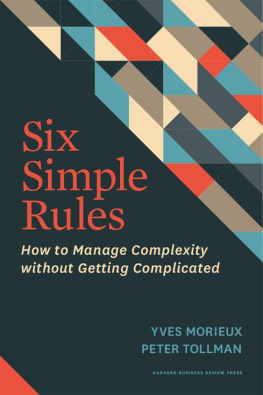All rights reserved. No part of this publication may be reproduced or transmitted in any form or by any means, electronic or mechanical, including photocopying, recording, or any information storage and retrieval system, without permission in writing from the publisher.
A division of Bastian Publishing Services Ltd.
Cataloguing-in-Publication Data available from Library and Archives Canada.
HOW DARE YOU MANAGE is a registered trademark of Nick Forrest. CORMORANT MANAGEMENT and CEO MANAGEMENT PRINCIPLES are trademarks of Nick Forrest.
To Sally.
How lucky I am!
I have written How Dare You Manage? to help would-be, new or veteran CEOs to close what I call the CEO skill gap. This gap exists because those who reach the very top of their organization:
Have never been taught how to manage large groups of employees
Have never been accountable for everything (until now, they have always worked for someone else there was always a boss to defer to)
Believe their role is to lead, whereas and this may sound counterintuitive it is primarily to manage
While I address CEOs directly throughout this book, I have written it for many others, as well, including:
Executive vice presidents or vice presidents, some of whom may aspire to the top role, who run a division in excess of 250 employees
Anyone who is part of an executive team that collectively manages a large workforce
Board members (including the chair of the nominating committee) who work with executive leaders and CEOs. Members of a companys board are custodians of the company; they should understand what it takes to support those who manage large groups of employees
Individuals who have been identified by the senior leadership team as high potential. Leaders and board members should be proactive in inviting senior talent in to the boardroom. If you are invited, you need to understand corporate leadership; you need to display how, in your department, you are doing all of the things that would be required of you in the CEOs position: developing and implementing a clear structure for your department and a functioning succession-planning strategy, setting and defining the goals of your department and reaching them through your people, and, most importantly, aligning your department with company-wide goals and approaches
Anyone who consults for, or provides services to, members of the C-suite (this includes executive coaches)
Senior Human Resources managers
Furthermore, while I focus on the realities of corporate life, readers in other types of business will also find this book helpful, including heads of family businesses and entrepreneurs/owners.
How Dare You Manage? includes examples from my experience as a consultant to CEOs and other senior leaders. In particular, I follow the progress of Jos Wintermans of Canadian Tire Acceptance Ltd., who provides a powerful illustration of how CEOs can identify their skill gap and close it and the amazing results that follow.
Allow me to speak to you, my reader, directly. I believe this book will help you focus on learning the craft, as opposed to the techniques, of management. (Say goodbye to the management flavour of the month.) I believe you will experience an increase in confidence by knowing there is a proven way forward, and I can do this. I hope your enthusiasm will spike at the possibility that I can truly create a highly productive organization that can achieve spectacular results with an engaged, kick-ass workforce.
Above all, I hope my boldness in identifying a skill gap in top leaders as one of the most serious problems faced by organizations today will be taken in the spirit in which it is meant: to help you unlock your own potential and the potential of everyone you manage.
Nick Forrest
How dare you manage?
I rarely say this aloud when Im consulting for CEOs, senior managers and board members, but it is often on the tip of my tongue.
Why? Because the corporate landscape today is replete with top leaders who dont understand it is now their work to manage a large group of people. They dont know what is required for doing so: developing and implementing a clear structure, process and set of practices for managers and those they manage, and executing on these consistently. This management deficit is a serious matter. Senior leaders who lack this understanding, who lack this skill, do untold damage to their organization: they hurt not only their employees but also the prospects of their organization and of themselves, not to mention their customers trust. Customers have always voted with their feet, but today they dont wait long to verify their perceptions, and they dont walk; they run.
Ironically, chief executive officers often tell their executive leadership team, board members, shareholders and the media that their organization is being held back by a skill gap among their employees. This almost always sounds good and right. And what happens next is logical, as policies and programs are developed to:
Find, train and retain the best talent and align the talent with the companys products or services
Teach everyone in the company to work collaboratively with customers
Ensure that all of the companys internal and external communications underscore this approach
I contend, however, that, to move forward, companies and boards, and CEOs themselves, must address a prior skill gap: the CEO skill gap.
Who Trains CEOs to Be CEOs?
It has become painfully clear to me, in my twenty-five years as a consultant to the C-suite, that business does not teach managers how to be a CEO.
Why?
Partly because the aura surrounding the position almost guarantees that CEOs will not hear what they need to hear. Even from themselves.
Partly because some CEOs approach their role politically. They litter the battlefield with anyone who gets in their way, including those whose wisdom they so sorely need. If these CEOs have a gap, they dont notice it and even if they did, its doubtful that they would care.

